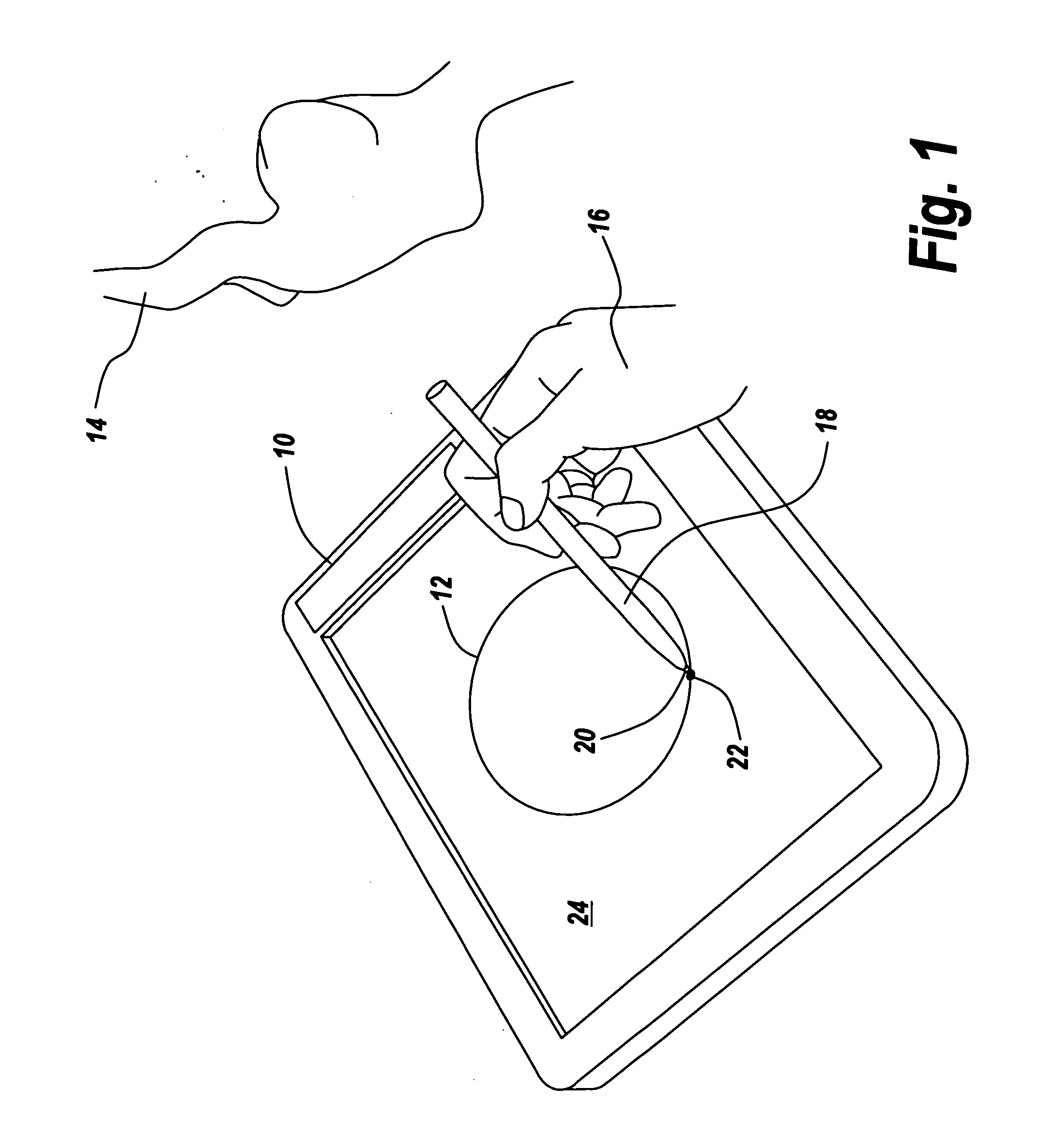Gesture-based cognitive testing
a cognitive testing and gesture technology, applied in the field of gesture-based cognitive testing, can solve the problems of screen obstructing the target, finger or stylus not being able to detect various other higher-level brain abnormalities or dysfunctions, and unable to detect various other abnormalities or dysfunctions, and achieve the effect of low cost and light weigh
- Summary
- Abstract
- Description
- Claims
- Application Information
AI Technical Summary
Benefits of technology
Problems solved by technology
Method used
Image
Examples
Embodiment Construction
[0046]As illustrated in FIG. 1, a tablet 10 projects a predetermined target path 12, in this case a circle, onto a screen 24. A test taker 14 utilizes his hand 16 to guide a stylus 18 along the target path projected onto the tablet. The tip 20 of the stylus is made to correspond to a target 22 traveling along path 12.
[0047]This type of cognitive performance measuring system has problems associated with it, not the least of which being that the stylus may interfere with the view of the target as it moves along the path, not to mention the problem of tablet instability when held on one's lap or any frictional characteristics of the stylus with respect to the surface of the screen here shown at 24.
[0048]The result of utilizing such a cognitive measuring device is that the results that are obtained are not reliable, vary from one test to the next, and do not result in reproducible results. Moreover, the measurements are so erratic that measure of any high level brain functioning is mask...
PUM
 Login to View More
Login to View More Abstract
Description
Claims
Application Information
 Login to View More
Login to View More - R&D
- Intellectual Property
- Life Sciences
- Materials
- Tech Scout
- Unparalleled Data Quality
- Higher Quality Content
- 60% Fewer Hallucinations
Browse by: Latest US Patents, China's latest patents, Technical Efficacy Thesaurus, Application Domain, Technology Topic, Popular Technical Reports.
© 2025 PatSnap. All rights reserved.Legal|Privacy policy|Modern Slavery Act Transparency Statement|Sitemap|About US| Contact US: help@patsnap.com



